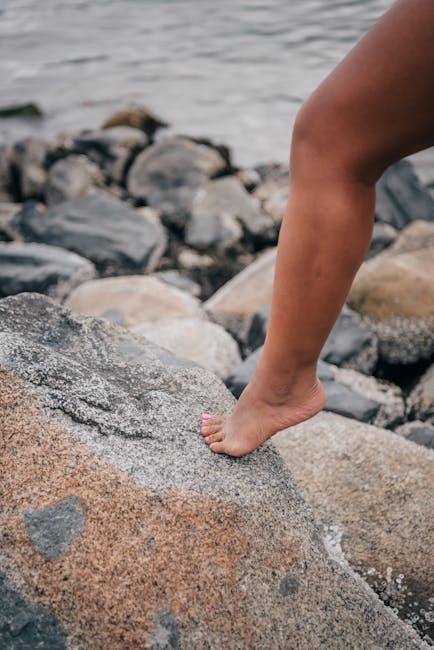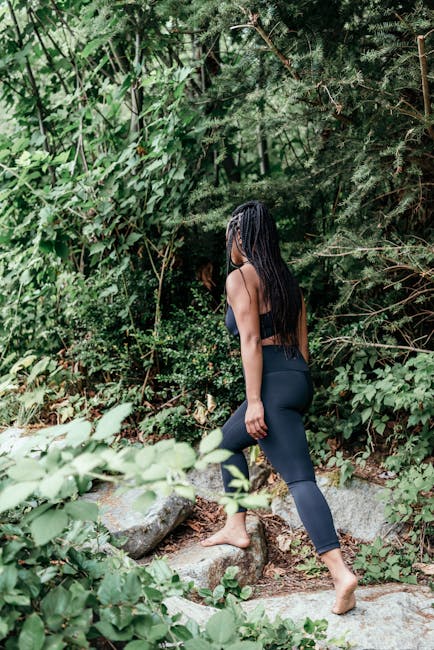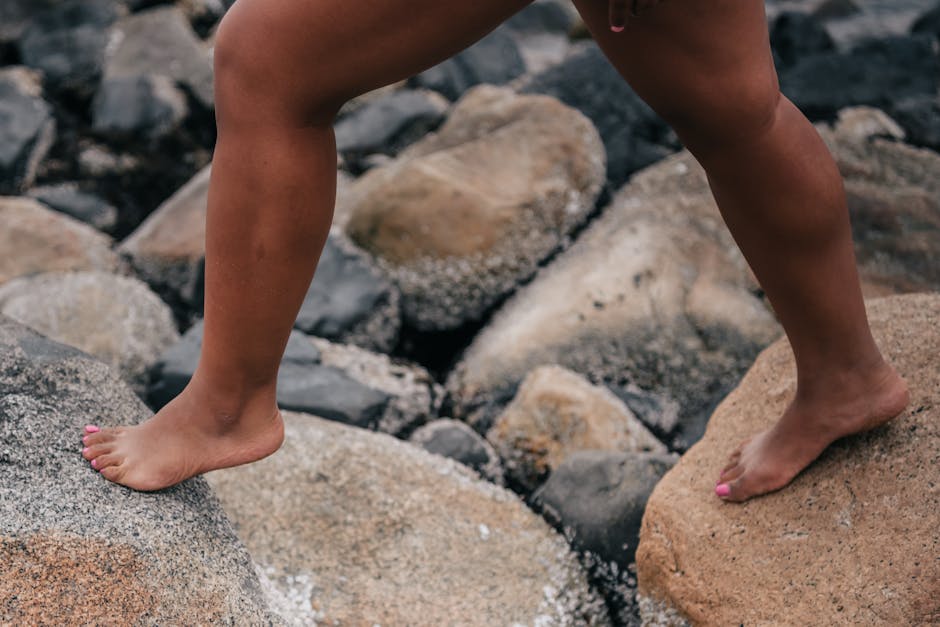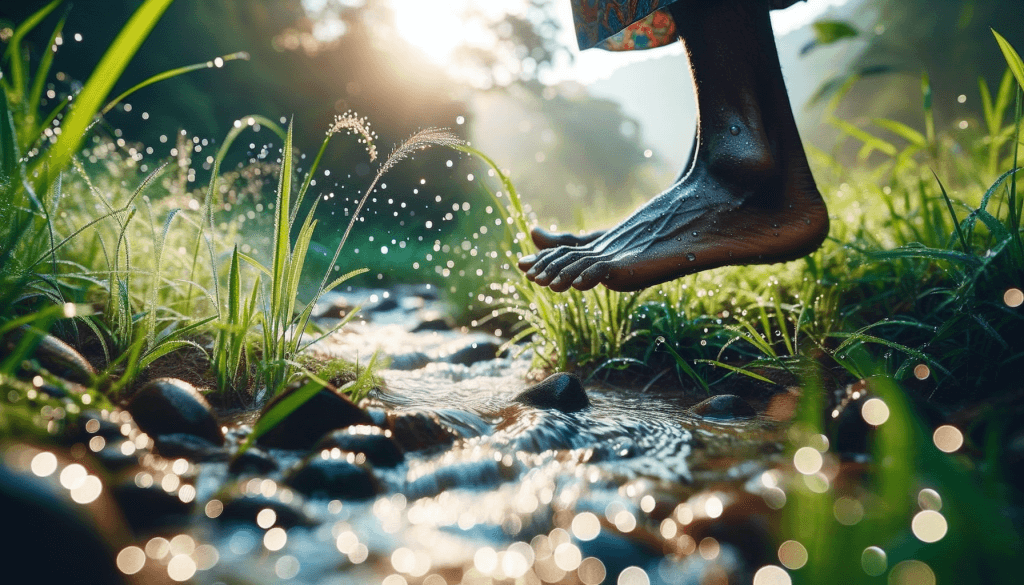Exploring the benefits of barefoot walking for grounding is like opening a door to a world where simplicity meets profound wellness. Imagine feeling the earth beneath your feet, connecting with nature in a way that modern shoes often prevent. This practice, known as grounding or earthing, is gaining attention for its potential health benefits. Curious about how something as simple as walking barefoot can impact your well-being? Let’s dive into this fascinating topic and discover why you might want to kick off your shoes and embrace the earth.
Key Takeaways
- Barefoot walking is a practice that connects you with the earth, offering both physical and mental benefits.
- Grounding can improve sleep, reduce inflammation, and enhance immune function.
- Incorporating grounding into daily life can be simple and rewarding.
Introduction to Barefoot Walking and Grounding
Definition of Barefoot Walking
Barefoot walking is exactly what it sounds like—walking without shoes. It allows your feet to connect directly with the ground, providing a natural experience that many find refreshing and invigorating. This practice is not just about feeling the grass between your toes; it’s about reconnecting with the earth in a way that modern life often neglects.
Concept of Grounding
Grounding, or earthing, is the practice of making direct contact with the earth’s surface. This can be achieved through barefoot walking, lying on the ground, or using grounding products. The idea is that the earth’s natural energy can have a positive effect on our bodies, promoting health and well-being.
Historical Context and Cultural Significance
Throughout history, many cultures have recognized the importance of connecting with the earth. Indigenous peoples, for example, have long practiced grounding as a way to maintain balance and harmony with nature. In today’s fast-paced world, grounding offers a way to slow down and reconnect with our roots.

The Science Behind Barefoot Walking
Physiological Effects on the Body
Impact on Muscles and Joints
Walking barefoot can strengthen the muscles and joints in your feet and legs. Without the support of shoes, your feet must work harder, which can lead to improved strength and flexibility. This natural movement can also help align your body, reducing the risk of injury.
Influence on Posture and Balance
Barefoot walking encourages better posture and balance. By feeling the ground beneath you, your body can naturally adjust to maintain stability. This can lead to improved coordination and a more graceful gait.
Psychological Benefits
Stress Reduction
Walking barefoot can be a calming experience, helping to reduce stress and anxiety. The simple act of connecting with the earth can have a grounding effect, bringing a sense of peace and tranquility.
Enhanced Mood and Mental Clarity
Many people find that barefoot walking enhances their mood and mental clarity. The connection with nature can be invigorating, providing a mental boost that can improve focus and creativity.

Health Benefits of Grounding
Improved Sleep Quality
Grounding has been linked to better sleep quality. By aligning with the earth’s natural rhythms, you may find it easier to fall asleep and stay asleep, waking up feeling refreshed and rejuvenated.
Reduction of Inflammation
Some studies suggest that grounding can reduce inflammation in the body. By connecting with the earth, you may be able to decrease pain and swelling, promoting overall health and well-being.
Enhanced Immune Function
Grounding may also boost your immune system. By reducing stress and inflammation, your body can focus on maintaining a strong defense against illness and disease.

Earthing: Reconnecting with Nature
The Concept of Earthing
Earthing is more than just a physical practice; it’s a way to reconnect with nature and find balance in our lives. By making contact with the earth, we can tap into its energy and find harmony within ourselves.
Potential Healing Effects
Connection to Gaia
The earth, often referred to as Gaia, is seen as a living entity that provides life and sustenance. By connecting with Gaia through grounding, we can find healing and renewal.
Energy Flow and Balance
Grounding can help balance the energy flow within our bodies. By aligning with the earth’s natural frequencies, we can promote harmony and well-being.

Practical Ways to Incorporate Grounding in Daily Life
Barefoot Walking Techniques
Suitable Surfaces for Walking
When starting barefoot walking, choose surfaces that are safe and comfortable, like grass, sand, or smooth stones. These natural surfaces provide a gentle introduction to the practice.
Safety Tips and Precautions
While barefoot walking is generally safe, it’s important to be mindful of your surroundings. Watch for sharp objects and uneven terrain to prevent injury.
Alternative Grounding Methods
Use of Grounding Mats and Sheets
If barefoot walking isn’t feasible, grounding mats and sheets offer an alternative way to connect with the earth. These products simulate the experience of grounding, providing similar benefits.
Incorporating Grounding in Urban Environments
Living in a city doesn’t mean you can’t practice grounding. Parks, gardens, and even small patches of grass can provide opportunities to connect with the earth.
Products to Assist Grounding
Overview of Grounding Products
Grounding products, such as mats, sheets, and shoes, are designed to help you connect with the earth’s energy. These tools can be used indoors or outdoors, providing flexibility in your grounding practice.
How to Choose the Right Product
When selecting grounding products, consider your lifestyle and needs. Look for items that are well-made and suited to your specific situation, whether you’re at home or on the go.
Benefits and Limitations of Grounding Products
While grounding products can be beneficial, they may not provide the same experience as direct contact with the earth. It’s important to find a balance that works for you, incorporating both natural and assisted grounding methods.

Conclusion
Summary of Benefits
Barefoot walking and grounding offer a range of benefits, from improved physical health to enhanced mental clarity. By connecting with the earth, you can find balance and harmony in your life.
Encouragement to Try Barefoot Walking and Grounding
Why not give barefoot walking a try? It’s a simple, enjoyable way to reconnect with nature and improve your well-being. Whether you’re strolling through a park or exploring your backyard, the earth is waiting to welcome you.
Final Thoughts on Embracing Natural Practices
In a world filled with technology and distractions, grounding offers a return to simplicity and connection. By embracing natural practices like barefoot walking, we can find peace and wellness in our everyday lives.
For those interested in exploring more about grounding techniques, check out this guide for additional insights.
If you’re curious about how grounding can be integrated with other wellness practices, consider reading about forest bathing and its psychological benefits.
And for those looking to enhance their physical health, exploring the benefits of regular physical activity can be a great complement to grounding practices.
Step into the World of Barefoot Walking: An Engaging FAQ on Grounding Benefits
What is barefoot walking and how does it relate to grounding?
Barefoot walking, also known as earthing, involves walking without shoes to connect directly with the Earth’s surface. This practice is believed to help balance the body’s electrical charge, promoting overall health and well-being by absorbing free electrons from the ground.
What are the potential health benefits of barefoot walking?
Barefoot walking may improve balance, posture, and foot strength. It is also associated with reducing inflammation, enhancing sleep, and boosting mood by facilitating the natural flow of electrons from the Earth into the body.
How does barefoot walking improve mental health?
Walking barefoot can enhance mental health by reducing stress and anxiety levels. The practice encourages mindfulness and a deeper connection with nature, which can lead to increased feelings of calmness and relaxation.
Can barefoot walking help with chronic pain management?
Yes, some studies suggest that barefoot walking can help alleviate chronic pain by reducing inflammation and improving circulation. The natural movement and grounding effect can also promote healing and pain relief over time.
Is barefoot walking safe for everyone?
While barefoot walking is generally safe for most people, those with foot injuries, diabetes, or other medical conditions should consult a healthcare professional before starting. It’s important to choose safe, clean surfaces to walk on to avoid cuts or infections.
How often should one practice barefoot walking to see benefits?
To experience the benefits of barefoot walking, it’s recommended to practice regularly, ideally a few times a week. Even short sessions of 15-30 minutes can be beneficial, gradually increasing duration as you become more comfortable.
What surfaces are best for barefoot walking?
Natural surfaces like grass, sand, and soil are ideal for barefoot walking as they provide a soft, safe, and grounding experience. Avoid hard, artificial surfaces like concrete, which can be harsh on the feet and lack grounding properties.
Can barefoot walking be incorporated into a fitness routine?
Absolutely! Barefoot walking can be a great addition to a fitness routine, offering a low-impact exercise that enhances balance and foot strength. It can be combined with other activities like yoga or tai chi for a holistic approach to wellness.
Are there any cultural or historical aspects of barefoot walking?
Barefoot walking has been practiced for centuries in various cultures as a natural way to connect with the Earth. Many indigenous cultures have long recognized the health benefits of walking barefoot, incorporating it into daily life and spiritual practices.
What should one consider before starting barefoot walking?
Before starting, consider the condition of your feet and any existing health issues. Choose safe, clean surfaces and start slowly to allow your feet to adapt. Pay attention to your body’s signals and consult a healthcare professional if you have concerns.



